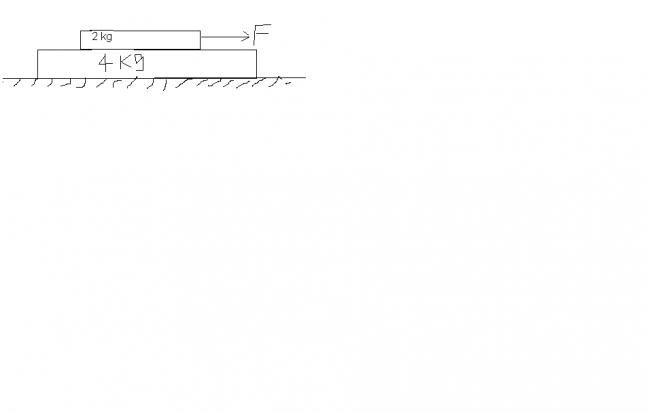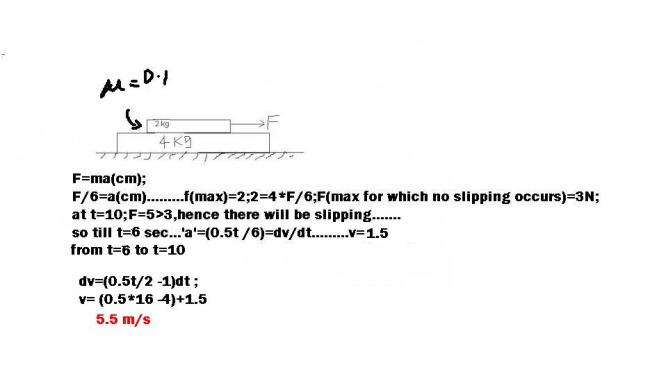Let assume first....that both blocks are not sliding...Then they will have common acceleration..a
Now (4+2)*a = F
a = F/6 = 0.5t/6
Now Force on 4kg block will be 4a = 2t/6 = t/3
And The maximum force that can be acted on 4Kg block is uN = 0.1*20 = 2
Hence for no sliding t/3≤2
or t≤6.
Hence upto t=6 both of them will have same acceleration..
After t=6
BOth block will have different acceleration...and both starts sliding on each other...
Hence friction will gain the limiting value..
So on 2kg there will be friction on back direction with value 0.1*20 = 2N
so total force on 2Kg will be = 0.5t - 2
acceleration a = t/4 - 1
dv = (t/4 - 1)*dt
v = t^2/8 - t
so v = t^2/8 - t
put the limit from t=6 to 10
Then we have v(10) - v(6) = 100/8 - 10- (36/8 - 6)
v(10) - v(6) = 12.5 -10 +1.5 = 4
so v(10) = 4+v(6)
Now velocity at t=6 can be calculated by putting t=6 in expression v =t^2/8 - t
so v(6) = 1.5m/s
hence v(10) = 5.5m/s
I have used the notation v(10) means velocity at t=10

